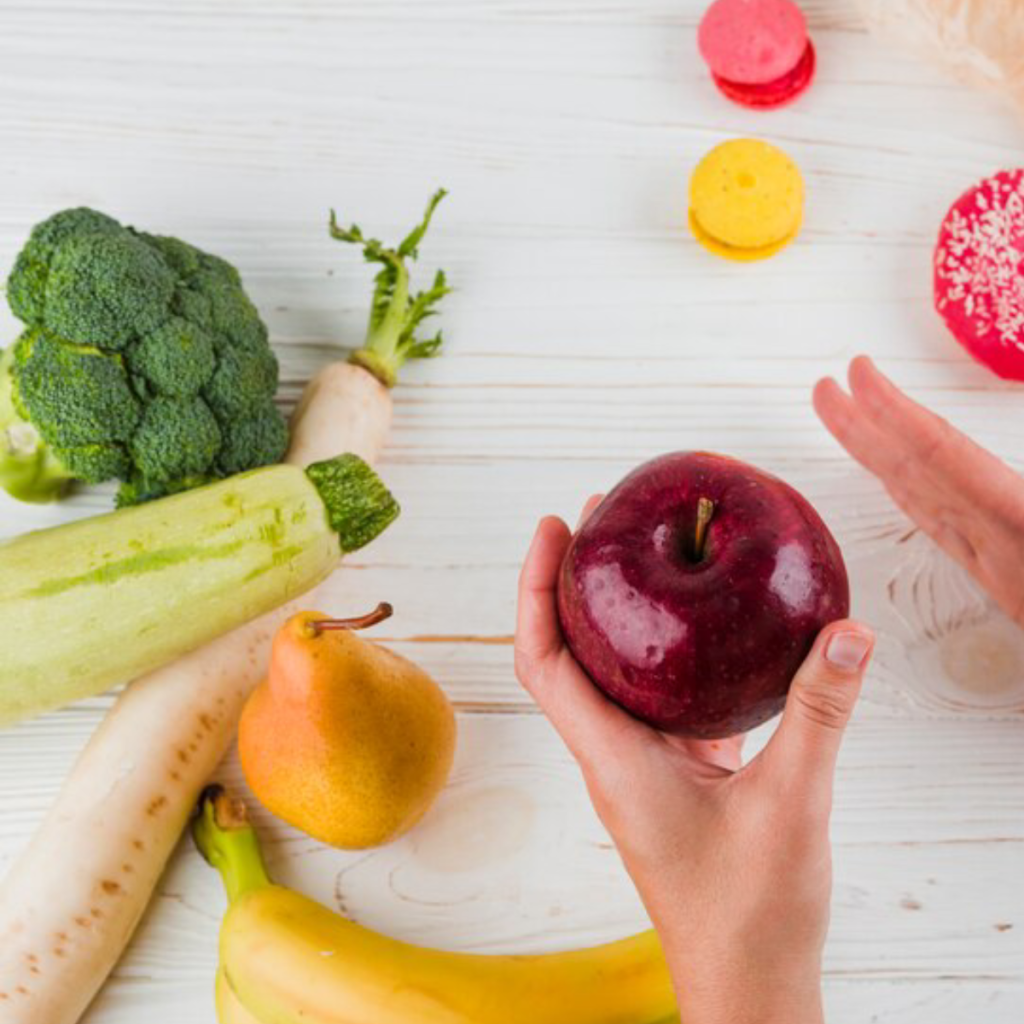Discover the potential benefits of dietary changes in reducing inflammation and back pain.
Can Dietary Changes Help Reduce Inflammation and Back Pain?
Are you tired of living with constant back pain? Well, before you reach for those painkillers, how about considering a more natural approach? Believe it or not, what you eat can play a significant role in reducing inflammation and alleviating back pain. Yes, you read that right! By making some simple dietary changes, you can potentially bid farewell to those nagging aches and finally enjoy a pain-free life. So, let’s dive right in and understand the fascinating link between diet, inflammation, and back pain.

Understanding the Link Between Diet and Inflammation
Before we jump into specifics, let’s comprehend the connection between diet and inflammation. You see, inflammation is your body’s natural response to injury or infection. It is a complex process involving various immune cells and chemical mediators. However, chronic inflammation can wreak havoc on your overall health, contributing to conditions like arthritis, heart disease, and yes, you guessed it, back pain.
A poor diet loaded with sugary treats, processed foods, and unhealthy fats can aggravate inflammation. These foods often contain high levels of refined sugars, artificial additives, and trans fats, which can trigger an inflammatory response in the body. On the other hand, a diet rich in antioxidants, vitamins, and minerals can help combat inflammation and promote overall well-being.
Fascinating stuff, right? Understanding the impact of diet on inflammation can empower us to make informed choices about what we put into our bodies and ultimately improve our health.
The Role of Inflammation in Back Pain
We all know that inflammation is the culprit behind painful swelling, redness, and discomfort. But did you know that it can also trigger back pain? When inflammation occurs in the spine, it can irritate the nerves and surrounding tissues, leading to persistent backaches.
Back pain is a common condition that affects millions of people worldwide. It can be caused by various factors, including poor posture, muscle strain, and injuries. However, inflammation can exacerbate these underlying causes and contribute to the intensity and duration of back pain.
But fear not, dear reader, for your diet holds the key to soothing that inflammation and bidding your back pain farewell. By making conscious choices to include anti-inflammatory foods in your meals, you can help alleviate back pain and promote a healthier spine.
How Certain Foods Can Trigger Inflammation
Now that we know the role inflammation plays in back pain, let’s take a closer look at the foods that can trigger this sneaky troublemaker. Foods high in trans fats, refined sugars, and processed ingredients are the usual suspects. These include fried goodies, sugary treats, processed snacks, and sugary beverages.
Trans fats, commonly found in fried and processed foods, have been shown to promote inflammation in the body. They can increase the production of inflammatory chemicals and contribute to the development of chronic inflammation.
Refined sugars, such as those found in desserts, sodas, and sweetened beverages, can also trigger inflammation. When consumed in excess, they can lead to a spike in blood sugar levels, causing the release of pro-inflammatory molecules and contributing to the inflammatory process.
Processed ingredients, such as artificial additives and preservatives, can also have inflammatory effects on the body. These additives are often found in packaged and processed foods, including snacks, ready-to-eat meals, and condiments. Consuming these foods regularly can contribute to chronic inflammation and its associated health issues.
But don’t despair! We have a trove of delicious anti-inflammatory foods waiting to take their place. By incorporating foods rich in antioxidants, omega-3 fatty acids, and phytonutrients into your diet, you can help reduce inflammation and promote a healthier back.
Some examples of anti-inflammatory foods include fatty fish like salmon and sardines, leafy green vegetables like spinach and kale, berries rich in antioxidants, nuts and seeds, and herbs and spices like turmeric and ginger. These foods not only provide essential nutrients but also possess anti-inflammatory properties that can help alleviate back pain and improve overall well-being.
Key Nutrients for Fighting Inflammation
When it comes to combating inflammation, arm yourself with an arsenal of nutrient-rich foods that will put those nasty aches and pains to shame. Here are some anti-inflammatory powerhouses to include in your diet:
Anti-Inflammatory Foods to Include in Your Diet
Adding colorful fruits and vegetables to your meals can have a significant impact on reducing inflammation. Strawberries, with their vibrant red color, are not only delicious but also packed with antioxidants that help fight inflammation. Blueberries, known for their deep blue hue, are rich in flavonoids that have anti-inflammatory properties. Spinach and kale, with their dark green leaves, are loaded with vitamins and minerals that promote overall health and reduce inflammation. Bell peppers, whether red, green, or yellow, are not only a colorful addition to your plate but also contain powerful antioxidants that combat inflammation.
Incorporating fatty fish into your diet is another excellent way to fight inflammation. Salmon, sardines, and mackerel are all rich sources of omega-3 fatty acids, which have been shown to have potent anti-inflammatory effects. These fatty acids help reduce the production of inflammatory compounds in the body, leading to a decrease in inflammation and a relief from aches and pains.
Turmeric, a vibrant and golden spice, contains curcumin, a compound known for its strong anti-inflammatory properties. Adding turmeric to your dishes not only enhances the flavor but also provides you with a natural and effective way to combat inflammation.
Healthy fats are also essential for reducing inflammation. Avocados, with their creamy texture and rich taste, are packed with monounsaturated fats that have been shown to help reduce inflammation. Olive oil, a staple in the Mediterranean diet, is not only delicious but also contains anti-inflammatory compounds that can help alleviate pain. Nuts, such as almonds and walnuts, are another great source of healthy fats that can contribute to fighting inflammation.
By incorporating these delicious goodies into your daily meals, you’ll be well on your way to fighting inflammation and putting an end to that pesky back pain!
Foods to Avoid to Reduce Inflammation
While we’re adding these anti-inflammatory heroes to our plate, let’s also kick some unwanted troublemakers out. Here are the foods you’ll want to steer clear of to keep inflammation at bay:
Sugary treats and beverages are not only bad for your waistline but also contribute to inflammation. Sodas, candy bars, and that pint of ice cream calling your name may provide temporary pleasure but can lead to long-term inflammation and pain. It’s best to limit your consumption of these sugary indulgences and opt for healthier alternatives.
Processed foods, such as chips, crackers, and microwave meals, are often high in trans fats, refined sugars, and artificial additives. These ingredients can trigger inflammation in the body and worsen existing pain. It’s important to choose whole, unprocessed foods whenever possible to reduce inflammation and promote overall health.
Red meat, especially fatty cuts of beef, lamb, and pork, can contribute to inflammation due to their high saturated fat content. While it’s not necessary to eliminate red meat entirely from your diet, it’s recommended to limit your consumption and opt for leaner cuts or alternative protein sources like poultry or fish.
Refined grains, such as white bread, white rice, and pasta, have been stripped of their fiber and nutrients, leaving behind a high glycemic index. These foods can cause a rapid spike in blood sugar levels, leading to increased inflammation. Choosing whole grains, such as whole wheat bread, brown rice, and quinoa, can provide you with essential nutrients and help reduce inflammation.
So long, inflammation-inducing foods! Your healthy, pain-free journey starts here.
Dietary Changes for Back Pain Relief
Now that we’ve covered the basics of the diet-inflammation-back pain connection, let’s explore some specific dietary changes you can make to find relief. Believe it or not, dehydration is often a hidden culprit behind those persistent backaches.
The Impact of Hydration on Back Pain
Water, my friend, is your best friend when it comes to combating back pain. Staying properly hydrated keeps your spinal discs healthy and facilitates nutrient delivery to your back. So, remember to chug that H2O throughout the day and bid adieu to dehydration-induced back pain!

Importance of Balanced Diet for Spinal Health
Aside from hydration, maintaining a balanced diet is crucial for the health of your spine. Nourishing your body with a variety of fruits, vegetables, whole grains, lean proteins, and healthy fats ensures that your back receives the nutrients it needs to stay strong and pain-free. So, embrace that rainbow on your plate and give your spine the love it deserves!
The Science Behind Diet and Pain Management
Okay, folks, let’s dive into the science of how diet influences pain perception. It turns out that certain foods can either exacerbate or alleviate pain. How cool is that?
How Diet Affects Pain Perception
Research has shown that certain compounds found in foods can activate or inhibit pain receptors in the body, affecting our experience of pain. For example, spicy foods containing capsaicin can reduce pain signals, while high-sugar diets can increase inflammation, intensifying pain. It’s like a battleground in your body, and your food choices determine the outcome!
Nutritional Strategies for Pain Management
Now that we understand the incredible impact of diet on pain perception, let’s explore some nutritional strategies to manage those pesky twinges and discomfort. By incorporating the following foods into your diet, you can potentially dial down pain levels:
- Ginger: This spicy root boasts anti-inflammatory properties and can help alleviate pain.
- Tart cherries: Packed with antioxidants and anti-inflammatory compounds, they make for a delicious pain-fighting treat.
- Green leafy vegetables: Popeye was onto something! Leafy greens like spinach and kale are rich in magnesium, known for its pain-relieving properties.
- Dark chocolate: Indulge your sweet tooth guilt-free with a square of dark chocolate. It contains compounds that can reduce pain signals. Sweet relief, indeed!
Implementing Dietary Changes for Long-Term Relief
Now that you’re armed with all these incredible dietary insights, how can you implement them for long-term relief? Fear not, dear reader, for I have some tips up my sleeve.
Tips for Making Sustainable Dietary Changes
Implementing dietary changes doesn’t have to be a daunting task. Start small, incorporate one anti-inflammatory food at a time, and gradually build a healthy, pain-fighting diet that suits your taste buds. Remember to make sustainable changes that you can maintain in the long run. You got this!
Monitoring Your Progress: Pain and Diet Diary
Lastly, keep a journal to document your progress. Track your pain levels and note the foods you consume daily. This will help you identify trigger foods and patterns, allowing you to fine-tune your diet for optimal pain relief. Plus, it’s a fun little activity that keeps you engaged in your health journey. Win-win!
So there you have it, folks. By making simple dietary changes and embracing an anti-inflammatory, pain-fighting feast, you can bid farewell to back pain and regain control of your life. Remember, it’s all about understanding the link between diet, inflammation, and pain, and crafting a sustainable plan that works for you. Cheers to a pain-free future, my friend!



